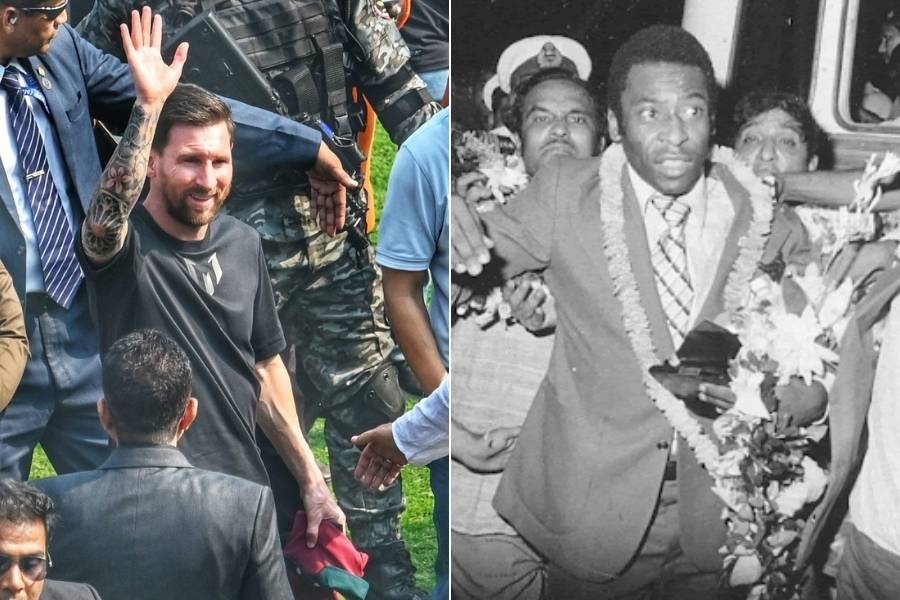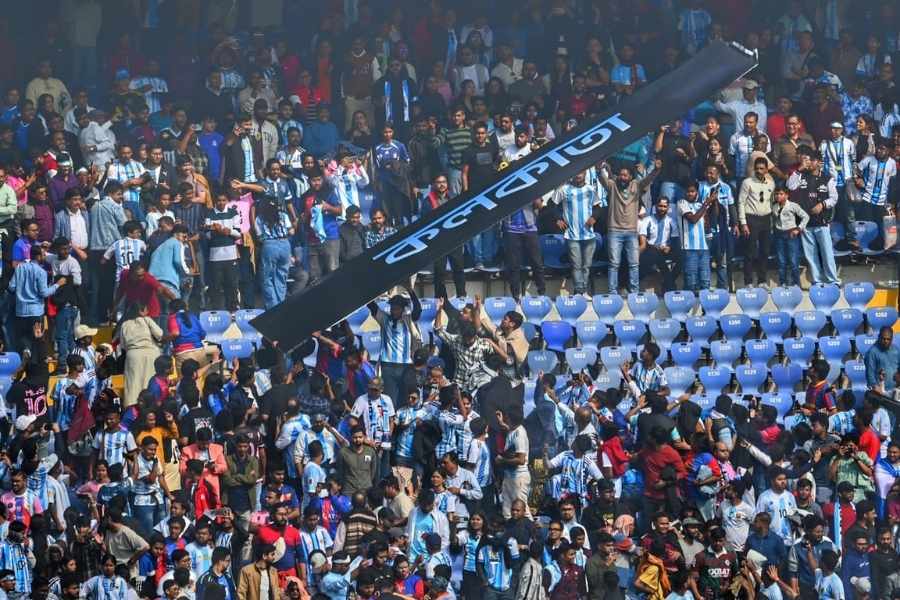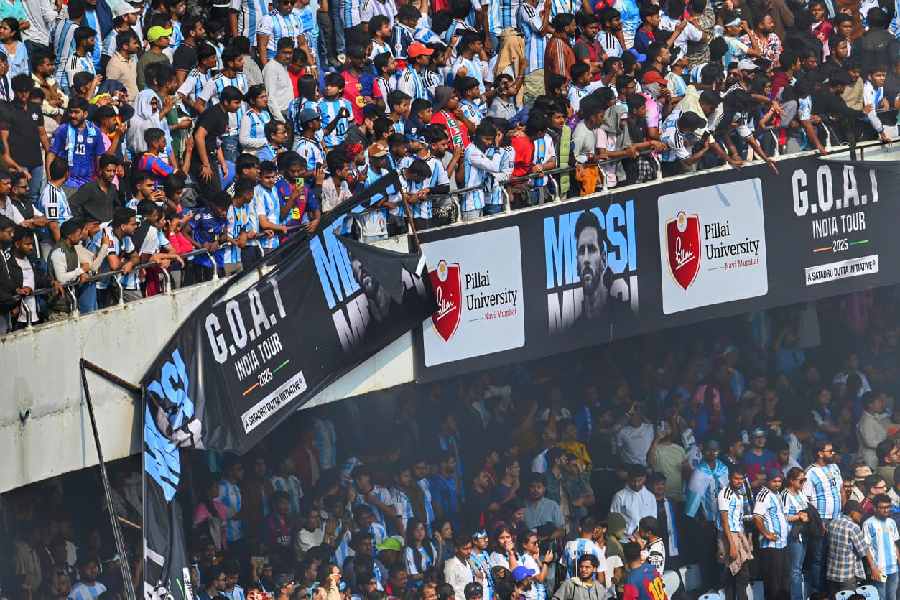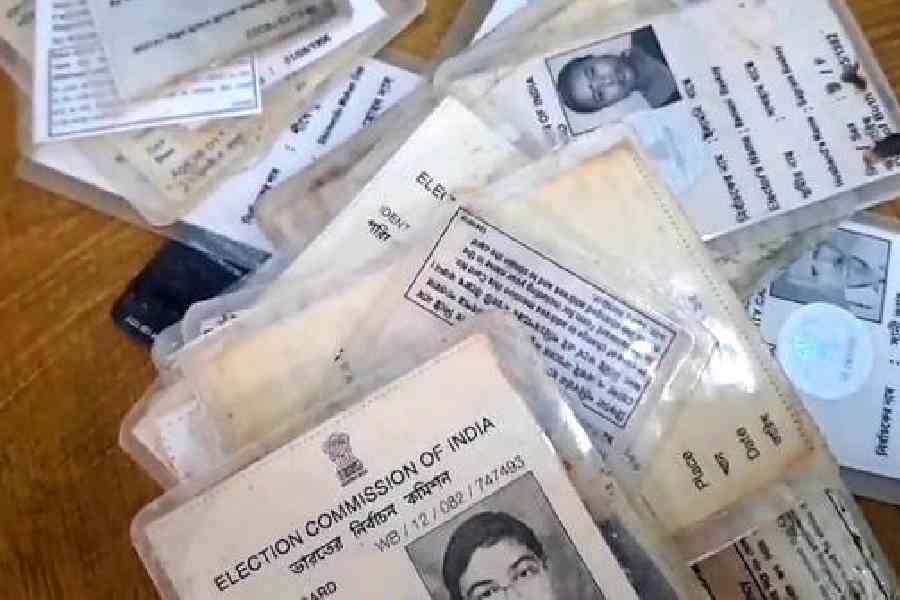 |
Tweak… Creak… Shriek… Beware: the merchants of nightmares are back. And taking viewers down into the dark realms of the underworld, literally, are an A-list of filmmakers.
Suddenly, horror is the flavour of the season in the Hindi film industry. And filmmakers such as Ram Gopal Varma, Vikram Bhatt and Ekta Kapoor seem determined to take this rattle- your-bones-and-roll-into-the-grave genre from the masses to the classes. For long the preserve of small towns and cities, the genre is now taking root in swanky multiplexes in the metros.
“We have created an audience and have to keep feeding it with something,” reasons actor Anupam Kher. “With 140-odd channels constantly playing films, soaps and reality shows, filmmakers are hard put to please them. They have to constantly keep reinventing themselves and their content. Horror with 3D is one way of shocking people into coming to the theatres. That explains the resurgence of the genre,” Kher says.
Grabbing the baton from Varma who gave the genre a gloss of respectability with the star-studded Bhoot in 2003 is Bhatt who has come to be identified as the new face of commercially viable Bollywood horror. Varma’s own horror film experiments had met with mixed reactions. While Raat (1992) was a debacle, Phoonkh (2008) succeeded, which couldn’t be said of his subsequent films — Phoonkh 2 (2010) and Bhoot Returns (2012).
Bhatt’s stable of films — from Raaz (2002), 1920 (2008) and Shaapit (2009) to Haunted 3D (2011) and 1920: The Evil Returns and Raaz 3D (2012) — may not have wowed the critics, but the films won over the masses. Like its predecessor Raaz 2, Raaz 3 (2012) shook the box office. With opening figures of Rs 11.05 crore — despite an “adult” tag — the film was a “monstrous” hit.
 |
 |
Now Bhatt, along with ASA Productions, has entered into a partnership with Bhushan Kumar’s T-Series to produce five films which will extend the boundaries of this genre. He has already started work on an action-packed sci-fi adventure with Bipasha Basu, the black magic woman of Raaz 3. There’s also a supernatural thriller with Kunal Khemu that rolls in January but the real horror will be 1920 Part 3 which will go on the floors in March.
“It is not a story about possession, but still scary,” says Bhatt who is hoping to get permission to shoot in Oxford’s Christ Church College. “It will be set in the London of the 1920s, with a Sherlock Holmes feel and ambience — gray, winter skies and chills down your spine,” Bhatt says.
The filmmaker, who is credited with bringing the three-dimension format into Bollywood with Haunted 3D and raising the bar this year with Karisma Kapoor’s comeback Dangerous Ishq, has been busy. He resurrected actor Aftab Shivdasani with 1920 – The Evil Returns and Raaz 3 marked the return of Bhatt and Basu to the Raaz franchise after a decade.
Having worked in various genres, Bhatt stresses that irrespective of the genus, filmmakers should respect the viewer’s time and money, and offer the best possible viewing experience without cutting corners. After Raaz 3’s state-of-the-art effects, Bhatt now plans to go a step further with his film 13th Floor in early 2014. “I intend to extend the 3D experience to the theatre so the viewer feels he’s actually on the 13th floor.” he says.
Bipasha Basu admits to being spooked by the visual effects of Raaz 3 designed by the team of Avatar (2009). “Everything was crystal clear and magnified. When viewing a water shot, I almost felt like I was touching the water,” says the star who after Raaz (2002), Rakht (2004), Darna Zaroori Hai (2006) and Raaz 3 (2012) now aspires to be India’s first “Scream Queen”.
She will be seen next in Aatma (2013), a film that its director Suparn Varma describes as a family drama with supernatural undertones. “There are no ugly ghouls with melting faces and red-eyed monsters; yet it is macabre in a different kind of way,” he says, pointing out that American psychological thrillers, such as Roman Polanski’s Rosemary’s Baby (1968), had no ghosts but ordinary people.
“It plays on our primal fear of losing a loved one. The presence of top actors should make people take the film seriously rather than dismiss it as another bhootiya kahaani (spooky story) from the Ramsay fear factory,” he says.
The Ramsays were originally the Ramsinghanis who ran an electronics shop in Karachi and Lahore. After Partition, Fatehchand U. Ramsay, along with his seven sons, moved to Mumbai and set up an electronics shop at Lamington Road. Soon, lured by the glamour of Hindi cinema, he got into show business with films such as Shaheed-e-Azam Bhagat Singh (1954), Rustam Sohrab (1963) and Ek Nanhi Munni Ladki Thi (1970).
The films flopped and the Ramsays were reeling under huge debts when inspiration struck. In a scene in Ek Nanhi Munni Ladki Thi, Prithviraj Kapoor wears a devil’s mask to carry out a robbery and terrifies Mumtaz. The film didn’t work but the “monster” sequence did, encouraging the Ramsays to experiment with Do Gaz Zameen Ke Neeche (1971). The film was advertised in a half-hour, late-night show on radio which helped it get the “Houseful” board up when it was released.
Its success sparked a trend of shoe-string budget movies that were wrapped up in a month with a crew of 15. Some of them like Saboot (1980), Veerana (1988) and Bandh Darwaza (1990) worked, encouraging a bigger filmmaker, Raj Kumar Kohli, to follow up with Nagin (1976), a revenge saga of a hissing serpent, and Jaani Dushman (1979), a multi-starrer revolving around a monster on a vendetta spree.
The films were huge hits, and were followed by other successful ventures such as Gehrayee (1979) and Junoon (1992). The former — Aruna Raje and Vikas Desai’s desi Exorcist — was a modest grosser, while Mahesh Bhatt’s film on a tiger-man opened well because of clever promotion and holding back videos by a week. But dozens of other shiver-fests — including Kohli’s Nagin and Jaani Dushman sequels — didn’t run. Even Red Rose, which had Rajesh Khanna playing a psychopath, and Karan Johar’s Kaal (2005), failed to wow viewers.
But the genre, which went into a decline after the flops, has suddenly returned to life with 1920: The Fear Returns, which made a modest profit, and the superhit Raaz 3.
Next year, soap queen Ekta Kapoor, with porn star Sunny Leone, is hoping to turn Ragini MMS into a saleable franchise. Endemol India, in association with Select Media Holdings Pvt. Ltd’s film production wing Moving Pictures, will jointly produce a horror-comedy inspired by the happenings — slanging matches, physical violence and so on — in the television reality show Bigg Boss. It will roll in early 2013 with some housemates from previous seasons of the show. There’s talk of a Bhoothnath sequel too, featuring Amitabh Bachchan, who acted in the 2008 film. Even the Ramsays are stirring awake with Deepak Ramsay, who directed the popular Zee Horror Show in the ’90s, reportedly working on a film that will star a known actor and have a budget of Rs 50-crore plus.
Trade analyst Amod Mehra, however, insists that despite the current hype, the genre has a fixed formula, a limited audience and an erratic success ratio. He points out that even Hollywood has been relying on novelty twists — such as giving a home video format to a series like Paranormal Activity to make them seem more authentic.
“There is no scope for enlightenment beyond haunted houses and vengeful ghosts. They’re usually a ‘no-no’ for single women living alone while an ‘A’ tag keeps children and families out,” he says.
Kher stresses that while horror has a proven track record, every Raaz or Haunted will not be a hit. “Eventually cinema is not just about telling a story but telling it well,” he adds.
Success is assured only when costs are low, Mehra maintains. “That’s why TV channels use horror to fill up late night slots. Soaps cost money but horror can be whipped up with a newcomer as the star.”
Suparn Varma, though, is of the opinion that to widen its reach, the scale has to become bigger and the product classier. He recalls Madhubala’s Mahal (1949) and Dilip Kumar-Vyjayanthimala’s Madhumati (1958) that played muse for Shah Rukh Khan’s Om Shanti Om (2007).
Manoj Kumar, who was almost driven insane by his dead wife’s lookalike in the 1964 film Woh Kaun Thi, however argues that the genre doesn’t need stars or morbid suspense but “haunting” moments. “More than the story that follows a pattern, it is the screenplay that keeps the film going,” asserts the actor-producer-writer-director. Will we see him return to horror too? He laughs, “I don’t want to horrify people, Vikram Bhatt is doing it well enough!”
COMMERCIAL SUCCESSES
Do Gaz Zameen Ke Neeche (1971)
 |
Shaitaan (1972)
Nagin (1976)
Darwaza (1978)
Gehrayee (1979)
Jaani Dushman (1979)
Saboot (1980)
Sannata (1980)
Purana Haveli (1984)
Veerana (1984)
Tehkhana (1986)
Dak Bangla (1987)
Purana Mandir (1989)
Bandh Darwaza (1990)
Junoon (1992)
Raaz (2002)
Bhoot (2003)
Phoonkh (2008)
1920 (2008)
13B (2009)
Raaz: The Mystery Continues (2009)
Haunted 3D (2011)
1920: Evil Returns (2012)
Raaz 3, in picture(2012)
COMING UP
1920 Part 3
13th Floor
Haunted 2
Ragini MMS 2
Aatma
Film on Bigg Boss House










